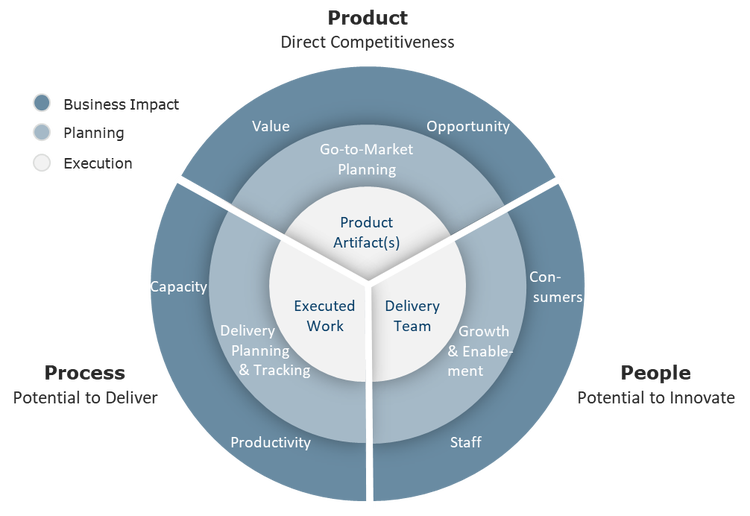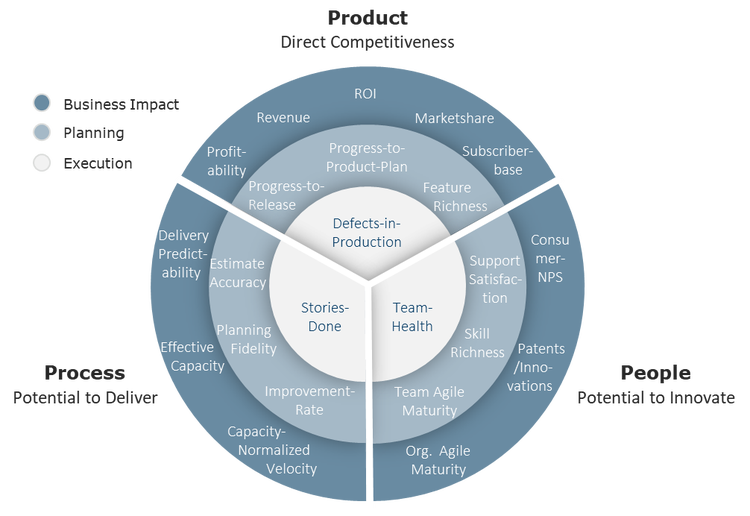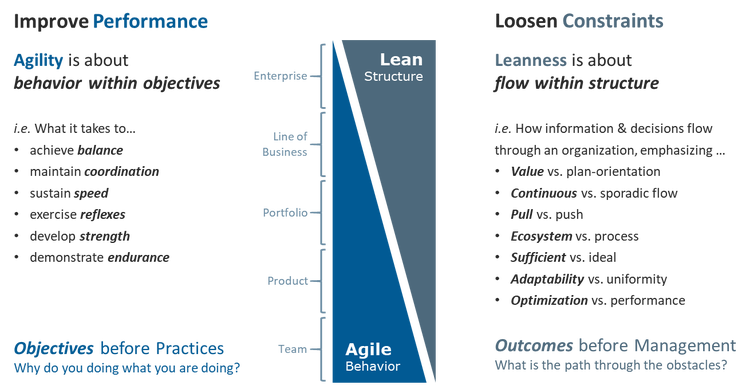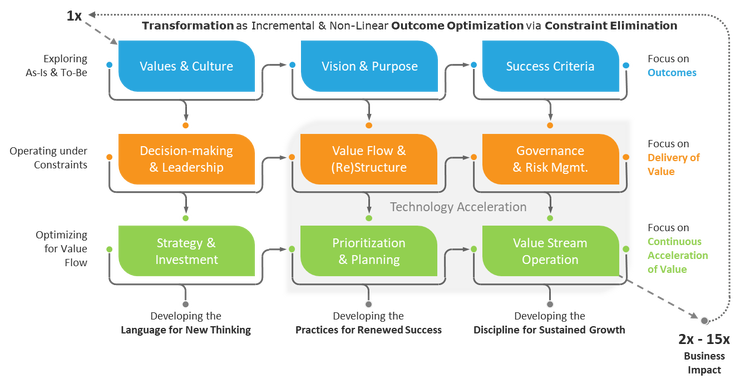
Insights
Driving Excellent Lean-Agile Outcomes
Alan Goerner, UST
Agile and Lean are two concepts created to be used in tandem. They complement each other and provide organizations with a strong blueprint for producing better results than if used separately or depending on traditional methods.
Alan Goerner, UST
We discuss how organizations can realize the power of Lean-Agile and how they must focus on the associated objectives and metrics to optimize their products, programs, and portfolios.
High Expectations
Even as Agile advocates, we must remember that we don’t “do Agile” for its own sake. We pursue Agile because it gets results. In this, an Agile skeptic’s perspective is the right one: Are we getting enough out of our practice of Agility? Can we get more from Agility? Are our expectations high – and broad – enough?
Outcomes – Setting Quantitative Objectives
Agility is designed to create high-quality products and deliver them to market quicker and with better inherent quality and fit-to-market than previously possible.
Agility is about achieving business outcomes. But, we often have just a 1-dimensional view of what those outcomes are. Usually, we focus tactically on our process and the things immediately before our eyes.
UST developed its Lean-Agile Balance Scorecard model to provide a balanced, quantitative decision-making perspective for Agile products, programs, and portfolios. It features three categories of associated objectives and metrics.

Figure 1 - Lean-Agile Balance Scorecard
And, it has three levels of metrics:
- Execution – immediate, tactical metrics about Work (Process), Artifact (Product), and Team (People)
- Planning – forward-looking planning and tracking for Delivery (Process), Go-to-Market (Product), and Enablement (People)
- Business Impact – the return in return-on-investment
In each of the nine subcategories, there may be many different objectives and associated metrics. It all depends on what you are trying to accomplish. Here are some examples.

Figure 2 - Example Metrics by Subcategory
There are many other possible metrics, but remember,more metrics are not necessarily better. The goal of the Lean-Agile Balanced Scorecard is to help us choose the right, few metrics on which to concentrate. The metrics should strike a balance among Process, Product, and People and enable better decision-making and return-on-investment. Metrics should measure what is important to measure – usually Business Impact – not just what is easy to measure. Also metrics should help us drive improvement.
Continuous improvement is a key Lean-Agile principle. Quantitative objective-setting, monitoring, and decision-making are critical elements of modern Lean-Agility.
Lean-Agility – Understanding the Hyphen
We prefer – and recommend – the term “Lean-Agility” to either “Agile” or “Lean” for a very specific reason: Lean-Agility brings together, in one body-of-practice, both sides of the optimization equation.
To optimize outcomes in any field, we must increase the positives and reduce the negatives. We must improve performance, which is the particular strength of Agility, and, at the same time, remove impediments and waste, the great strength of Lean.

Figure 3 – A Lean-Agile Manifesto for the 3rd & 4th Generations of Lean-Agility
Lean and Agile are complementary, not competing philosophies. Separately, they are powerful. Together, with the focus of Lean-Agility on Continuous Outcome Optimization, they are truly transformational.
Outcome Optimization & Constraint Resolution
We know that Lean-Agility has evolved through four generations, has elevated from Team level to the Enterprise, and has spread across Technology, Operations, Strategy and Governance. We understand better than most why Lean-Agility works, what can limit its potential, and how to unlock that potential.
This understanding is expressed in a simple but profound way in Figure 4. It shows the 10 factors and areas-of-practice that drive – or constrain – Lean-Agile performance:
- Values & Culture, Vision & Purpose, and Success Criteria
- Decision-making & Leadership, Value Flow & (Re)Structure, and Governance & Risk Management.
- Strategy & Investment, Prioritization & Planning, and Value Stream Operation
- And, Technology Acceleration, i.e., Automation
But, the greatest importance in this diagram – the core of our differentiation – is the two-dimensional structure of influence, i.e. enablement and constraint, among these factors. How Values & Culture really do affect – for better or worse – Decision-Making & Leadership. How Vision & Purpose are essential to setting appropriate Success Criteria. How Prioritization & Planning can be constrained by Value Flow & (Re)Structure. How Value Stream Operation can be either supercharged or hobbled by the way that Governance & Risk Management is performed.

Figure 4 - Lean-Agile Performance Factors and their Interrelationships
The Magnitude of the Possible and Reasonable
These insights form the foundation of our 4th-gen approach to Lean-Agility maturation – our techniques for driving excellent Lean-Agile outcomes. These aren’t just little incremental gains. Real achievable gains of …
- 1.5x to 2.5x in revenue, 3x-5x speed-to-market, 12x-15x ROI
- 2x-8x in velocity, 4x-12x in quality, 2x-6X in scale
- +2 to +4 market positions, 2x-4x in subscriber base, 2x-4x in satisfaction & loyalty
- … are possible. Others have done it. With the will and our help, you can too.